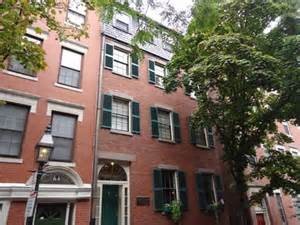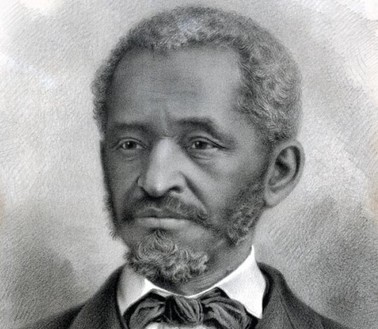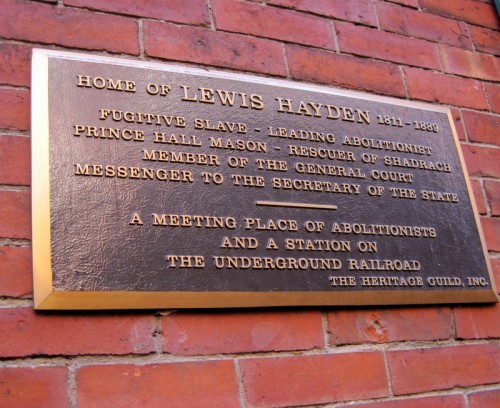Lewis and Harriet Hayden House (Black Heritage Trail Site 6)
Introduction
Text-to-speech Audio
Images
The Hayden House

Lewis Hayden

Plaque at the front entrance to the Lewis and Harriet Hayden House

Backstory and Context
Text-to-speech Audio
Lewis Hayden was born into slavery in Kentucky. His first owner was a Presbyterian minister. While he was still young, members of his family were sold to different owners. His own mother threatened to kill him while he was a child to spare him the horrors of slavery. Years later, he was traded for a couple of carriage horses. He met and married his first wife, Esther Harvey, in 1830. They had two sons together, one of which died shortly after his birth. Unfortunately, Esther and their son had a different owner, and they were sold to a new owner. Hayden never saw them again. In 1842, Lewis Hayden married Harriet Bell. He took in her son Joseph as his own child. Determined not to lose his family a third time in this life, he escape with Harriet and Joseph through the Underground Railroad. They managed to escape to Ohio, and later Canada, with the assistance of abolitionists Calvin Fairbank and Delia Webster. Fairbank and Webster were later tried and convicted for their actions.
After some time in Canada, the Haydens moved to New Bedford and finally to Boston. They bought a house, which Harriet operated as a Boarding House for other new free Blacks in Boston. Lewis Hayden began to run a clothing shop out of a storefront at 107 Cambridge Street. His venture was successful and he eventually needed more space. The clothing shop moved to a larger spot at 121 Cambridge Street in 1853. The clothing shop was a place where Lewis held many abolitionist gatherings to help fellow slaves get to freedom. The Hayden House, however, was an actual stop on the Underground Railroad for slaves to pass safely to their destination. Records from the Boston Vigilance Committee, of which Lewis was a member, report that many self-emanicipated former slaves received the assistance of the Haydens and safe shelter at their home on 66 Phillips Street between 1850 and 1860.
There is a story that claims that the Haydens kept barrels of gunpowder under the front steps at all times. They could greet people with candles who came to the front door, and if anyone tried to force their way into the household, the Haydens could drop the candle and kill everyone. This stop on the Underground Railroad was so important that Harriet Beecher Stowe, author of Uncle Tom's Cabin, was taken in to see how slaves on the run felt.
Lewis led a busy life outside of the Hayden House, he helped recruit members into the 54th Regiment, an all-Black regiment that was led by a white Robert Gould Shaw, and he gave money to help fund John Brown's raid on Harper's Ferry. This was because John Brown had visited the Hayden House on his last trip to Boston. Lewis also went on to serve in the Massachusetts House of Representatives for a term, and then spent the rest of his life by working for the Massachusetts Secretary of State as their messenger.
Cite This Entry
Kirwan, Joshua and Erin Ritz. "Lewis and Harriet Hayden House (Black Heritage Trail Site 6)." Clio: Your Guide to History. March 6, 2017. Accessed April 1, 2025. https://theclio.com/tour/178/4
Sources
Museum of African American History, Boston - Black Heritage Trail Site 6. (n.d.). Retrieved October 8, 2014, from http://www.afroammuseum.org/site6.htm
United States. National Park Service. (2014, September 8). Lewis and Harriet Hayden House. Retrieved October 8, 2014, from http://www.nps.gov/boaf/historyculture/lewis-and-harriet-hayden-house.htm
Lewis Hayden. The Liberator Files. Accessed March 05, 2017. http://theliberatorfiles.com/friendships-forged-fire-lewis-hayden/.
Lewis Hayden. New Bedford Historical Society. Accessed March 05, 2017. http://nbhistoricalsociety.org/Important-Figures/lewis-hayden/.

